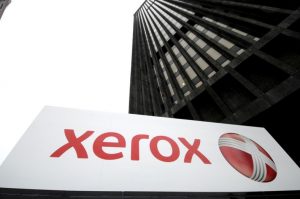
Piece by piece, the future of Xerox Corp. continues to take shape. This week, the company announced that shareholders approved its proposal to adopt the merger agreement pursuant to which Xerox expects to implement a holding company reorganization.
Holders of approximately 99.7 percent of common shares present and voting at Xerox’s annual meeting, representing approximately 77.0 percent of the company’s total outstanding common shares, voted in favor of the proposal. The final voting results for the annual meeting will be reported in a Form 8-K that Xerox will file with the Securities and Exchange Commission.
The closing of the holding company reorganization remains subject to the satisfaction of customary conditions, including, without limitation, receipt of approval from the Financial Conduct Authority of the United Kingdom. Xerox is targeting the third quarter of 2019 for the closing of the holding company reorganization; however, there can be no assurance regarding completion of the reorganization or timing of regulatory approvals, which could delay the closing.
Post-closing, its common stock will trade on the New York Stock Exchange under Xerox’s current trading symbol, “XRX.” In addition, to eliminate duplicative administrative requirements and costs, Xerox has notified NYSE Chicago that it intends to voluntarily delist Xerox common stock from trading on NYSE Chicago immediately prior to completion of the holding company reorganization.
Holding Company Benefits
By implementing a holding company structure, Xerox can reap certain benefits, including lowering its tax bill, protect its patents and more effectively diversify its unit’s businesses.
While there has been no movement on the Fuji Xerox front, Xerox continues taking measures to right its ship. According to the Connecticut Post, Xerox eliminated 400 jobs in the first quarter of 2019, while leaving approximately 1,100 positions unfilled as a result of employee attrition.
According to the Post, Xerox paid out $24 million in severance between January and March, plus paid $12 million to cancel existing leases. The company has another $74 million in restructuring charges budgeted for the coming 12 months.
In its most recent quarterly report, Xerox reported that equipment sales were down 10.2%. Virtually all of its MFP placements were down, with the exception of entry-level color MFP placements, which rose 10%.
Stock Values Versus Operations
Xerox did exceed its profit estimates and rolled out various initiatives improve its business, including its Project Own It campaign and bringing Global Imaging Systems under the Xerox Business Solutions flag. While the situation looks improved from an investor point of view, how it will shake out operationally—including the ongoing saga with Fuji Xerox—remains to be seen.
“We optimized our workforce, and while we don’t ever want to minimize the risk of disruption that’s created by all these changes, … in each case we made these changes because we know what’s best for Xerox in the long-term,” the Post reported Bill Osbourn Jr., chief financial officer of Xerox, as telling investment analysts in a conference call. “I personally met with over 300 of our managers, and I can tell you that while there was some disruption, they are all excited about the future because we are investing in the long-term.”
The venerable manufacturer is still reconciling its legal woes. Earlier this year, a New York federal judge rejected Xerox’s bid to dismiss the $1 billion suit filed by Fujifilm Holdings in the wake of Xerox nixing the proposed $6.1 billion merger. The judge called Xerox’s arguments “plainly wrong” and “thoroughly unpersuasive.”








